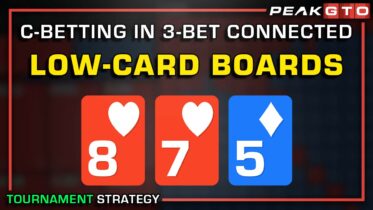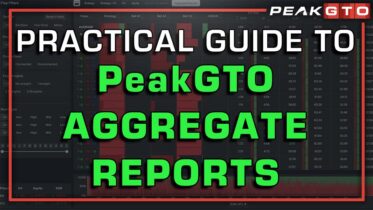The loose-aggressive (LAG) poker playing style is one of the most complex in the game. Depending on how well one plays it, it can lead to great success or massive failure.
Many of the world’s best poker players play a LAG style with great success, while many of the world’s biggest losers can also be classified under the category of loose aggressive play.
It will be incredibly important to realize where exactly on that scale a particular player is and how well they are applying the LAG style in-game.
But before we can discuss how to adjust to playing against LAGs, let’s first understand what a loose, aggressive poker playing style entails and how to recognize players who play it at your table.
What is a Loose Aggressive Poker Player (LAG)?
Unlike a tight aggressive player (TAG) or even NITs, who plays few hands very aggressively, a loose aggressive player (LAG) will play very aggressively with a much wider range of hands.
This starts with preflop hand selection, where an LAG will typically play a wider range than most players and continues throughout all betting streets.
Typically speaking, a LAG will raise and re-raise wide ranges before the flop and will continue to barrel whenever he catches any equity or when he feels weakness in his opponent.
The LAG approach is often so successful in poker because players generally don’t like to face big bets and will often fold too much, even to a player who is known for bluffing more than he should be.
When talking about these players, it is important to recognize the difference between good LAGs and bad LAGs, which can be quite massive at times.
A good player will balance his play by introducing a lot of bluffs into his range of cards but also will not go too wide and not bluff too often so as to make his range extremely weak across the board.
A bad LAG, on the other hand, keeps firing away anytime he gets a chance, very rarely folds to bets or raises, and plays like a complete maniac, usually to his own detriment.
While a strong LAG playing style can work out quite well and win big in the long run, a badly executed one is the fastest way to lose money in poker.
With that said, let’s take a look at some common strategies you can use when facing a LAG to protect yourself against good LAGs and print money against weaker ones.
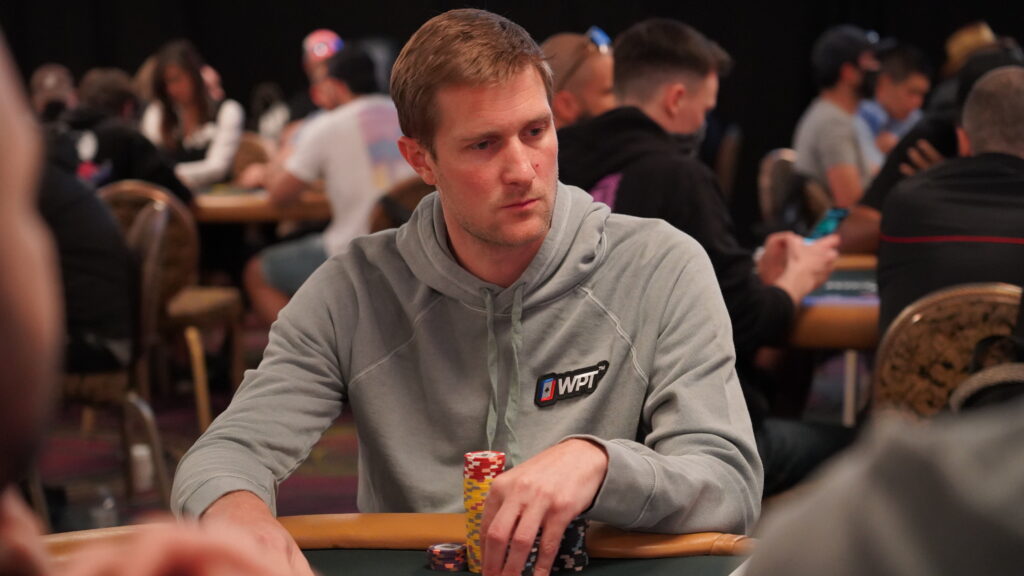
Poker vlogger Brad Owen has made a career out of
recording videos of himself exploiting LAGs in wild cash games.
Preflop Play Versus Good LAGs
Any poker strategy starts before the flop, with LAG players typically playing more hands than most other player types and playing them quite aggressively. A LAG will raise more, 3-bet more, and 4-bet more than your average opponent, which means you should be adjusting your ranges as well.
When faced with a thinking LAG who isn’t just throwing chips around like a maniac, your main adjustment should be to slow-play your strong hands more often and 4-bet bluff with a wider range.
Slow-playing your strong hands against a LAG 3-bet or 4-bet makes a lot of sense because his range includes more bluffs than it should, which means you are less likely to get action if you re-raise again.
At shallower stack depths, you will usually want to slow-play monsters like AA or KK, expecting to get him to keep firing at the pot with very little equity, often losing his entire stack.
The deeper you get, the more money you will want to put into the pot with your monsters, but slow-playing them once in a while will still make sense and put you into some amazing postflop situations.
When it comes to 4-bet bluffing, the logic is the same. Since your opponent is more likely to be bluff 3-betting, they are also more likely to fold to your 4-bet, which means expanding your 4-betting range will make sense.
Remember not to 4-bet hands like suited Broadways that you can easily profitably call against a player like this, and rather use small suited Aces or lower-suited connectors to expand your 4-bet bluffing range against LAGs.

Tom Dwan is one of the best poker players to use a LAG strategy.
Preflop Play Versus Maniacs
The other type of LAG, which we often refer to as “maniac,” is a player who plays very aggressively on all betting streets but does not really understand equities, ranges, or poker in general.
Instead, this player type tries to win every pot and always continues to bet no matter what. In most cases, these are the big losers in any poker game.
When faced with a player like this, bluffing before the flop should be more or less out of the question, although you still don’t want to make your range too predictable.
For the most part, you will want to 3-bet, and 4-bet, a very strong range made up of value hands and only an occasional bluff, and you will want to make your raises big.
Remember, a maniac’s range is too wide in every spot, but he is very unlikely to fold to any raise you put in. Instead, he is more likely to come over the top once again.
Whenever you have a player who fits into the category of a maniac, remember to go for value any chance you get and strap in for a wild ride full of variance, big pots, and big winning sessions.
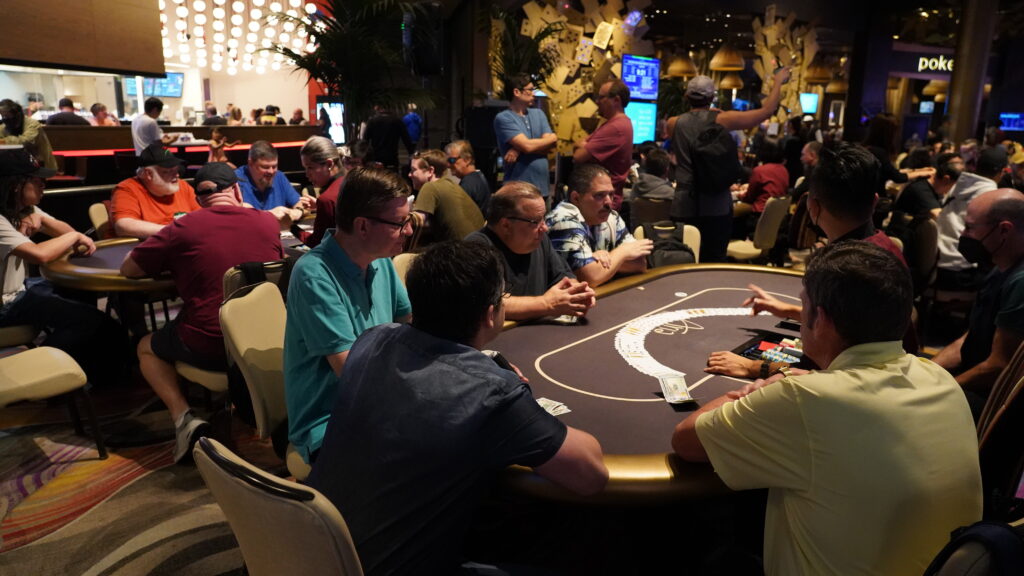
When playing in lively poker games (like the yearly PokerCoaching.com Meet-Up Game),
be prepared to face some maniacs!
Importance of Position Versus LAGs
The importance of position in poker cannot be overstated in any situation, but it becomes that much greater when faced with LAG players in particular.
Sitting to the immediate left of a LAG, as opposed to sitting to his immediate right, can mean the difference between having an enjoyable night at a poker table versus living through a real poker nightmare.
By default, a LAG player will raise and re-raise tons of hands before the flop and will continue to barrel flops, turns, and rivers relentlessly.
By having a position on a LAG, you will get a chance to limit his options by flatting his raises, calling his flop bets, and generally not allowing him to put as much money into the pot as he would like to.
Playing out of position, on the other hand, you will often find yourself giving away information, missing value bets, and not realizing as much of your equity as you would want to.
If you have the option, always position yourself to the left of the most aggressive players at the table and to the right of TAGs and NITs, as this will put you in the best position to make money.
In tournament poker, where your seat is assigned to you, remember to adapt to your table and play tighter with LAGs to your left in order to make sure you are not getting pushed off your hand too often.

Make sure you know what position you are in when establishing preflop ranges.
Use Their Aggression Against Them
By their nature, LAGs are more aggressive than an average poker player, and this means they will give you more opportunities to trap them.
While you should definitely not follow in the footsteps of Phil Hellmuth and think everyone is just waiting to punt their stack away into your trap, there are definitely situations in which slow-playing and trapping can work like a charm against LAGs.
We already talked about slow-playing monsters before the flop against LAGs, and the same logic continues across the board.
When you flop monsters against a LAG, you should often slow play, act like you are on a draw, and allow them to bomb turns and rivers with overbets, hoping to get you to fold your marginal holdings.
Remember, raising too early against a LAG doesn’t work very well with strong hands because their range is likely to be weak and loaded with bluffing hands that don’t have too much equity.
As always, going too far in either direction will make you exploitable as well, so make sure not to slow-play your monsters every single time. Raise more in situations when your strong hands are vulnerable, and the LAG is likely to have a hand they can continue with, and less on locked boards that make it unlikely for LAG to have much equity.
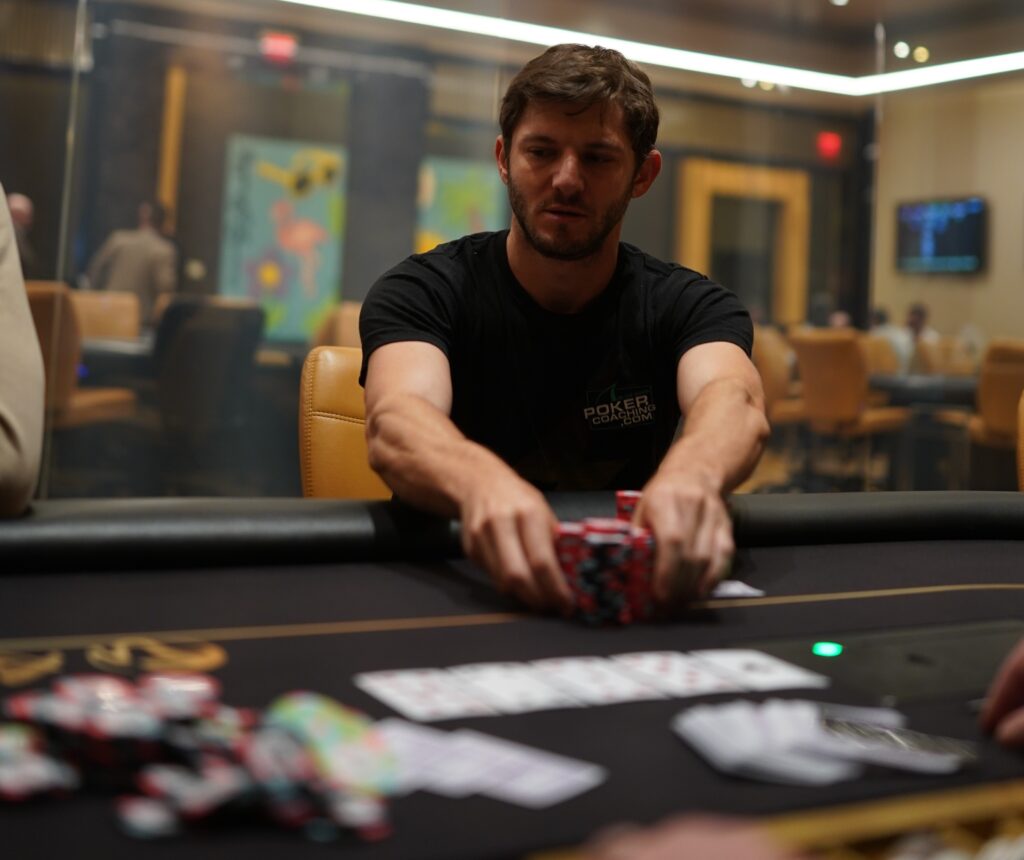
Do not be afraid to apply aggression when facing LAGs.
Bluff Catch More Against LAGs
We talked a bit about how to play your very strong hands against LAGs, but what do you do when you have a good hand but not a great one?
The answer is to bluff catch a lot, and allow your opponent to keep barreling into you until the river. In some cases, you will have to close your eyes, make a big call, and hope for good news.
The worst part about playing against competent LAGs is that you will often face big bets that you simply have to call, and at times, this can look a bit silly to an innocent bystander.
Poker hand example
Imagine playing in a $1/2 Texas Hold’em cash game with effective stacks of $500, a LAG sitting in the small blind, and you looking down at J♥T♥ in the cutoff.
You open to $6, the LAG 3-bets to $20, and you make the call, taking you to a flop of:
J♦5♦4♦
With $41 in the pot, the LAG fires a $30 c-bet, and you make the standard call, taking you to the turn, which is the Q♠, making the board:
J♦5♦4♦Q♠
You are faced with a $65 bet into $101. At this point, your opponent is representing a hand like AA, KK, AQ, QQ, JJ, or QJs, all of which are certainly possible.
However, since we are up against a LAG, there is also every chance he has a diamond draw, possibly combined with a wheel draw, as well as other hands like AT or 76s, which are simply barreling to get a fold from the exact kind of hand you have.
You make the call, and the river card comes down, completing the board:
J♦5♦4♦Q♠5♠
With every single draw having missed, and you holding no blockers to any of the draws, your opponent now bets $200 into the pot of $236, representing an absolute monster.
It is in spots like these, when facing a LAG, that you will have to make some tough calls. While they will end up having some big hands from time to time, on a board like this, a LAG will also be inclined to bluff a lot.
However, before making a play like this, make sure that you actually know your opponent and aren’t just guessing as to his likelihood to be bluffing, as that can be the difference between making the right call and just throwing your chips away.
Be Patient with the LAGs
There are days when you play against the wildest of LAGs and get absolutely destroyed as the deck keeps on hitting him, and there is seemingly nothing you can do to offset the variance.
Losses against a LAG can hurt a lot, as you are often forced to make plays that you would not make against calling stations, but you must remember that you are playing poker for the long run.
As with all things in poker, patience is key to playing against loose-aggressive players as well, as the right spots will come up, and the LAG will end up bluffing off his stack often enough to make you the winner.


